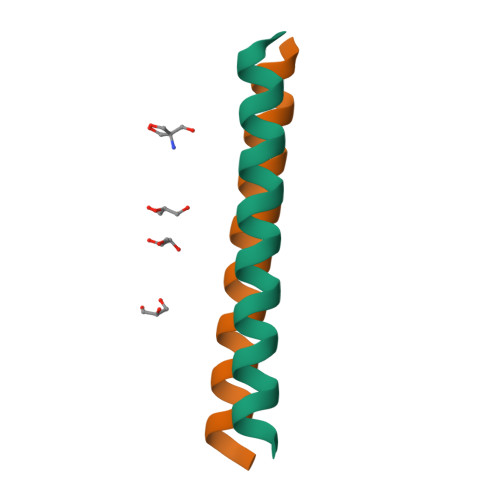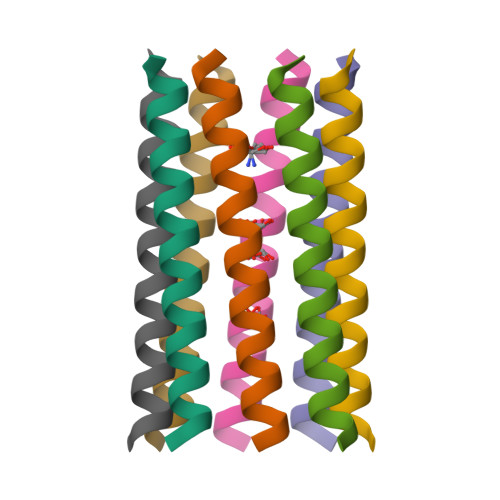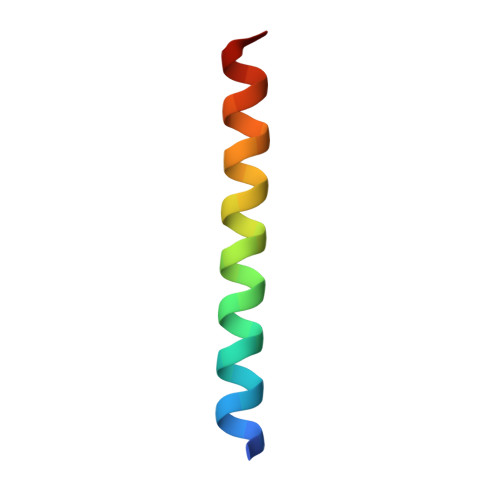Differential sensing with arrays of de novo designed peptide assemblies.
Dawson, W.M., Shelley, K.L., Fletcher, J.M., Scott, D.A., Lombardi, L., Rhys, G.G., LaGambina, T.J., Obst, U., Burton, A.J., Cross, J.A., Davies, G., Martin, F.J.O., Wiseman, F.J., Brady, R.L., Tew, D., Wood, C.W., Woolfson, D.N.(2023) Nat Commun 14: 383-383
- PubMed: 36693847
- DOI: https://doi.org/10.1038/s41467-023-36024-y
- Primary Citation of Related Structures:
7NFF, 7NFG, 7NFH, 7NFI, 7NFJ, 7NFK, 7NFL, 7NFM, 7NFN, 7NFO, 7NFP, 8A09 - PubMed Abstract:
Differential sensing attempts to mimic the mammalian senses of smell and taste to identify analytes and complex mixtures. In place of hundreds of complex, membrane-bound G-protein coupled receptors, differential sensors employ arrays of small molecules. Here we show that arrays of computationally designed de novo peptides provide alternative synthetic receptors for differential sensing. We use self-assembling α-helical barrels (αHBs) with central channels that can be altered predictably to vary their sizes, shapes and chemistries. The channels accommodate environment-sensitive dyes that fluoresce upon binding. Challenging arrays of dye-loaded barrels with analytes causes differential fluorophore displacement. The resulting fluorimetric fingerprints are used to train machine-learning models that relate the patterns to the analytes. We show that this system discriminates between a range of biomolecules, drink, and diagnostically relevant biological samples. As αHBs are robust and chemically diverse, the system has potential to sense many analytes in various settings.
Organizational Affiliation:
School of Chemistry, University of Bristol, Cantock's Close, Bristol, BS8 1TS, UK. w.dawson@bristol.ac.uk.




















